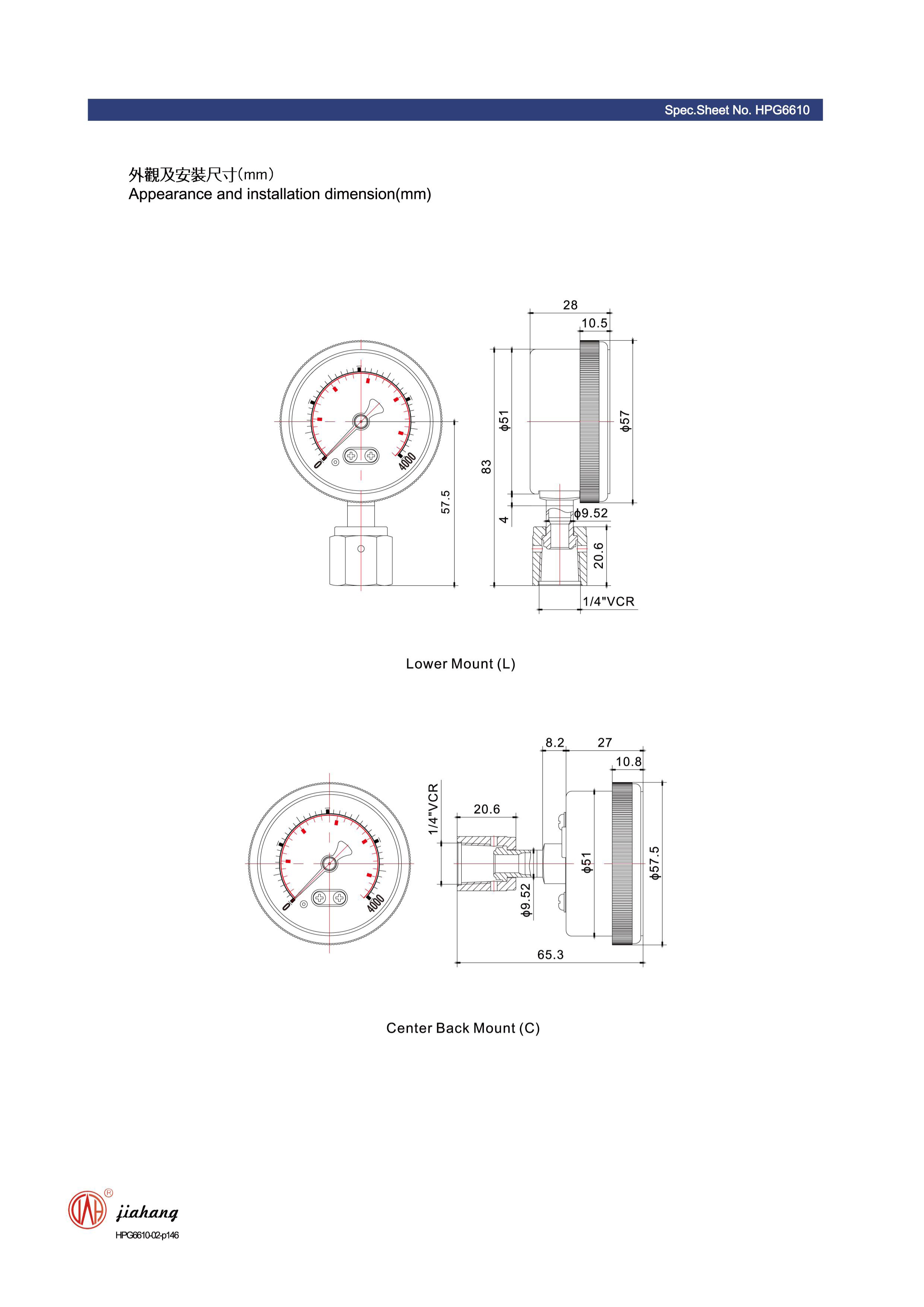
Nov . 20, 2024 08:40 Back to list
cryogenic differential pressure gauges
Understanding Cryogenic Differential Pressure Gauges Principles and Applications
Cryogenic differential pressure gauges are essential instruments in various industrial applications, specifically in environments where extremely low temperatures are present, typically below -150°C (-238°F). These instruments are designed to measure the difference in pressure between two points, providing crucial data for processes involving cryogenic fluids such as liquefied natural gas (LNG), liquid nitrogen, liquid helium, and other cryogenic materials. Understanding their operation, features, and applications is vital for engineers and technicians working in fields such as aerospace, energy, and medical technologies.
Operating Principle
Cryogenic differential pressure gauges operate on the principle of differential pressure measurement and utilize various technologies, including strain gauges, capacitive sensors, and piezoresistive sensors. The most common types are based on capacitive and piezoresistive measurement principles, which allow for accurate readings even in extremely low temperatures.
In a capacitive gauge, two flexible membranes separated by a dielectric fluid detect changes in pressure. When pressure is applied, the membranes deflect, altering the capacitance between them. This change is converted into an electrical signal representing the differential pressure. Piezoresistive gauges, on the other hand, utilize materials that change their electrical resistance when exposed to mechanical stress. As the pressure difference acts on the sensing element, the resistance changes, allowing for precise pressure measurement.
Key Features and Design Considerations
Designing cryogenic differential pressure gauges involves meticulous consideration of materials and components to ensure reliability and accuracy in extreme conditions. The materials selected must exhibit low thermal conductance, preventing heat transfer that could affect measurement accuracy. Stainless steel, Inconel, and other specialized alloys are often used to fabricate these gauges, ensuring durability and resistance to the corrosive effects of cryogenic fluids.
One of the critical features of these gauges is their ability to maintain performance over a wide range of temperatures. A well-designed cryogenic differential pressure gauge can function accurately across the entire cryogenic spectrum, providing consistent and reliable readings regardless of the specific fluid being measured.
Moreover, calibration is crucial for ensuring the accuracy of these instruments. Due to the potential for temperature-induced errors, regular calibration against known pressure standards is essential. This practice enhances the reliability of the readings and ensures that the gauge remains within specified tolerances.
Applications
cryogenic differential pressure gauges

Cryogenic differential pressure gauges find applications in numerous sectors, including
1. Aerospace In the aerospace industry, these gauges are used in fuel systems for cryogenic fuels, such as liquid oxygen and liquid hydrogen, which are essential for rocket propulsion. Precise measurement of pressure differences can lead to improved safety and efficiency in fuel management.
2. Energy Sector The oil and gas industry extensively employs cryogenic gauges in LNG processing and transport. Monitoring pressure differences helps manage the flow of LNG in pipelines and storage facilities, ensuring operational safety and optimal performance.
3. Medical Technologies In the field of cryogenics, medical applications often require precise measurement of pressure in the storage tanks of cryogenic gases used for medical purposes, such as liquid nitrogen for the preservation of biological samples.
4. Research and Development Many experimental setups in research facilities require accurate measurements of cryogenic conditions. Differential pressure gauges are crucial for maintaining and monitoring the pressure in experiments involving superconductors and quantum computing.
Challenges and Future Trends
Despite their importance, cryogenic differential pressure gauges face several challenges. These include potential sensor drift due to material degradation at low temperatures, the complexity of calibration processes, and the need for specialized training for personnel.
However, advances in technology are paving the way for improvements. The development of more robust materials, improved sensor designs, and electronic systems that minimize thermal effects promise a future of enhanced performance and reliability. Additionally, the integration of IoT technologies could enable real-time monitoring, facilitating better control over processes and predictive maintenance.
Conclusion
Cryogenic differential pressure gauges play a pivotal role across various high-tech industries, ensuring safety, efficacy, and precision in environments characterized by extreme temperatures. As technological advancements continue, these instruments will likely become even more critical, enabling innovations in cryogenics and various related fields. Understanding their principles, features, and applications is essential for maximizing their potential in today's industrial landscape.
-
High-Quality Pressure Gauge on Fire Extinguisher - Reliable Water Fire Extinguisher Pressure Gauge Suppliers & Exporters
NewsJul.08,2025
-
High-Quality Water Pressure Differential and Gauge Kit Reliable Manufacturers & Competitive Quotes
NewsJul.08,2025
-
High-Precision Digital Diaphragm Pressure Gauge – Reliable Manufacturer & Competitive Quotes
NewsJul.07,2025
-
Wholesale Diaphragm Pressure Gauge Supplier - Premium Quality & Competitive Price
NewsJul.07,2025
-
Digital Diaphragm Pressure Gauge Reliable & Precise Measurement Top Manufacturers Quotes
NewsJul.06,2025
-
High Accuracy Piston Type Differential Pressure Gauge - Reliable Manufacturers & Competitive Quotes
NewsJul.06,2025
